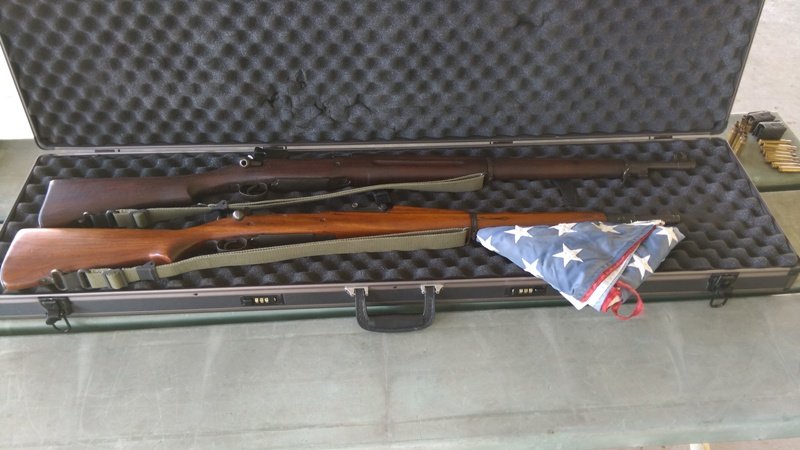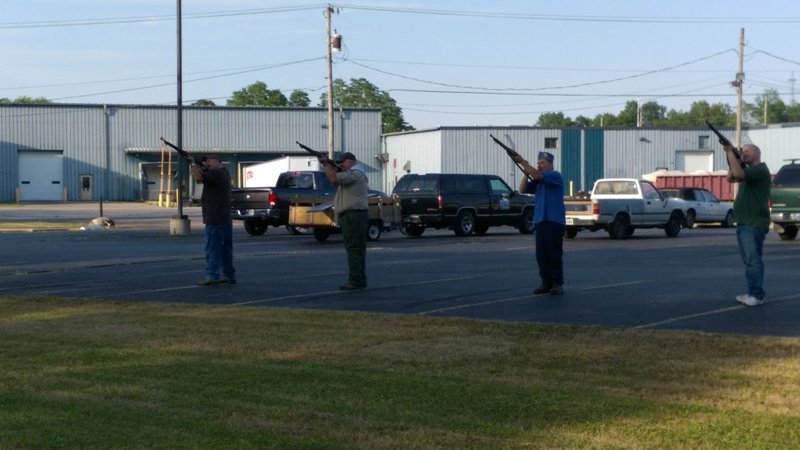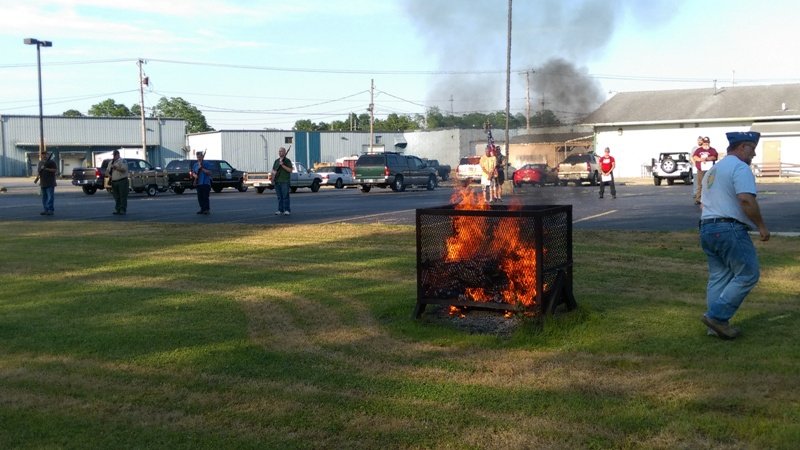I figured it being the 100[SUP]th[/SUP] year anniversary of the beginning of The Great War (or otherwise known as WWI); I would start a post as a tribute to those great American doughboys who served this great country. Even though the United States did not enter the war till 1917, our troops served with great distinction and valor. Who can forget the actions fought at Belleau Woods by the USMC who earned their famous nickname “Devil Dogs”. Or perhaps the famous rifleman Sgt. York at Chatel Chéhéry, France where he quieted a machine gun nest and then proceed to capture 4 officers and 128 men by himself. Major Charles Whittlesey of the Lost Battalion fame, Dan Daily a double awarded Metal of Honor award even before conflicts started in Europe, or Henry Johnson who fought off a detachment of 20 troops at times with just a bolo knife when his rifle jammed. Airmen like Frank Luke or Raoul Lufbery or the top American ace of the war Eddie Rickenbacker who climbed into literal kites with engines and became knights of the skies.
This war brought about some of the greatest technology advances in such a short timeframe, it was scary to those who witnessed it and had to master it quickly. The advancements of machine guns, tanks, aircraft and new and horrible weaponry like flamethrowers, tanks and artillery shells loaded with mustard gas changes the face of warfare forever. So with all that said, I present a couple of warhorses that have acquired this year. I understand that both of these most likely rode out the war in storage rack or crate and did not experience the muddy trenches of Flanders, but their manufacture dates are within the dates of the war and represent rifles that were used.
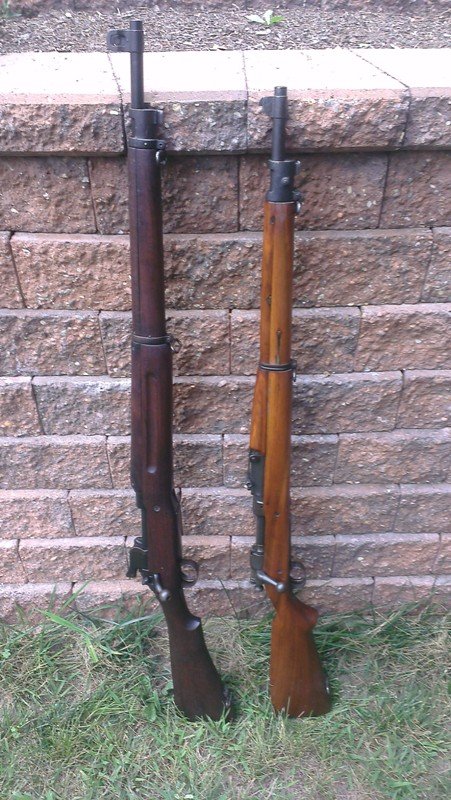
The first rifle that I would like to introduce is the latest to my collection. I picked it up last Saturday at CMP store at Camp Perry. For many years, I have been searching for a M1903 rifle. I don’t know why, but watching movies like Sgt. York and Sand Pebbles must have fueled this underlying urge. So, I was wandering over the racks of Garands, trying to help my friend find a M1C for his collection. I look on the other side of the rack and here are two M1903 sitting by their lonesome. I go over and pick one of them up and look at the serial number and quickly realize that the serial number on it is low, extremely low. At this time, I realize why they were sitting by themselves; these two rifles were low serial number rifles.
For those of you who don’t know much about the history of this rifle, in a nut shell, the metallurgy of the receiver was sketchy at first. Part of the process involving the machining of the receiver was to heat the receiver up to a level where the metallic structure of the steel is hardened. The process of that was to watch the receiver till it reached a specific color determined by the worker. The problem with that was the workers would sometimes mis-judge the color and the steel would become brittle. The problem did not really present itself until the war started when the rifles started getting shot heavily with ammo that was cranked out for the sake of production numbers and not quality. When rifles started exploding unexpectedly, the problem was discovered and eventually fixed. By double heat treating and adding some equipment to monitor the heating process, rifles were again safe to shoot. But now they had something like a million rifles produced that could not be fixed. Eventually, those rifles would be replaced with safer receivers, but when those war drums beat, you use what you have. And this would happen again in WWII where these rifles were pulled from inventory and pressed into service. Low serial numbers found now are generally not shot because it is impossible to determine if the receiver could give way and kaboom or not. I am ok with that. I have a 03A3 which is the WWII updated version if I really want to go shooting, and I feel the urge for preservation.
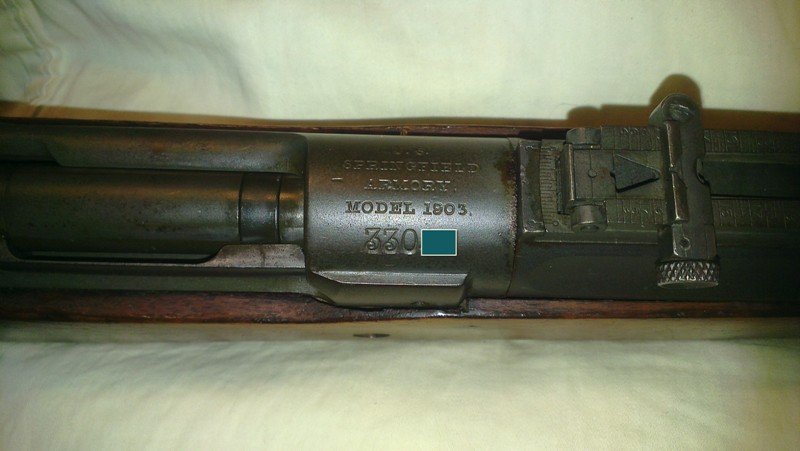
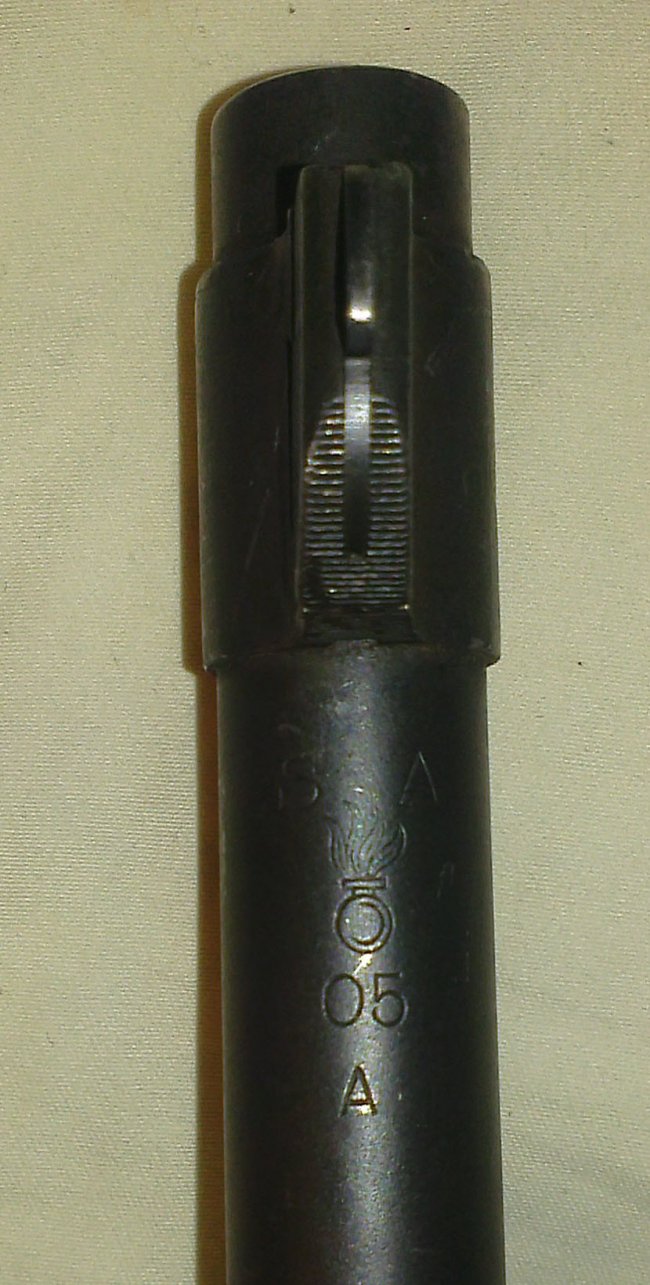
So, now for some of the history of this piece: The serial number indicates a build date of 1905, early 1905 to be exact. We are talking Roosevelt timeframe, Teddy Roosevelt. I check out the barrel date and it is also 1905. Rifle & receiver are correct time to both be original. This particular rifle is known to collectors as a Rod Bayonet rifle. The original 03 was assembled with a bayonet that consisted of a rod, very much like those found on some French rifles. The thought behind this was that knife bayonets were sometimes lost and having a rod that is attached to the rifle all the time would not be lost. Even in 1903, the bean counters were alive and kicking furiously. So initial production were created with rod bayonets till around 1905 when a rifle was shipped to the Commander-in Chief for evaluation, none other than Teddy. And Teddy was not impressed with the rod bayo one bit. Being a vet (San Juan Hill ring a bell?), Teddy had combat experience and realized that the contraption being attached to this battle rifle was not something that would stand up to the rigors of a good hand-to hand brawl. At his urging (order), the rod was replaced with a superior knife style. At some time this rifle was converted to the knife style, most likely 1905-1907 timeframe.
Another conversion done to this rifle at the same time was the caliber change from .30-03 to the much loved and cherished .30-06. Yes, original 03 rifles were not even the right caliber. Till the round was finally accepted in 1906, early rifles used a round with a rounded bullet. The 06 round replaced old round nose with a modern and more aerodynamic spitzer type bullet we now live with today.
I am sure that there is someone out there who is saying “That stock is not correct for a rifle from WWI.”, and they are right. This particular stock is what is known as a Type C stock, or a pistol grip stock. After doing some research, it is my belief that this rifle carried its original stock till the 1930’s where it went thru an arsenal refit to this stock. It is not a WWII refit because the cut for the windage screw is a round cut typical of a 1930’s refit. I can tell it was refitted at Augusta Arsenal by the cartouche, but don’t have any idea when. The original bolt is also long gone, replaced with a Remington 03A3 bolt somewhere down the road. I really wish this rifle could talk. I would like to know how it survived that long with the stock barrel and receiver.
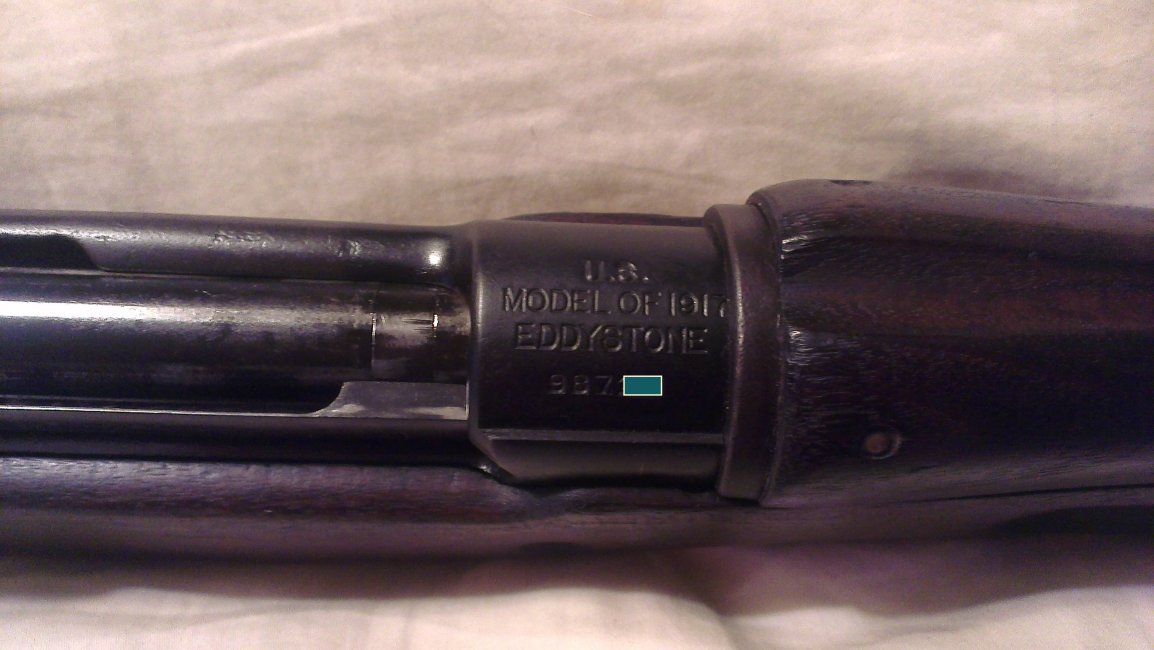
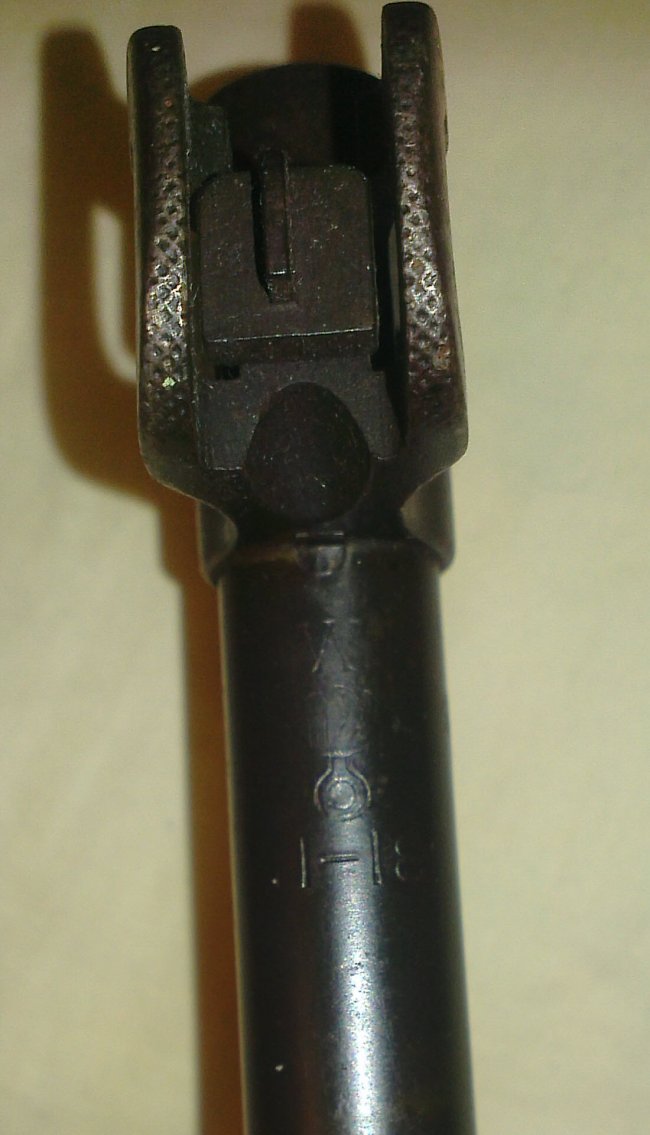
The second rifle I acquired this year was at the Nappanee Gun Show in March. I always enjoy this show and this year was no exception. In my wanderings, I happened upon this poor lonely M1917 sitting in the midst of a number of “huntin” rifles and shotguns looking very out of place. I ask to look at it and the gentleman behind the table says “Sure, do you know what it is?” Is this a trick question or what…? You bet I know what it is. And off we go. I start by looking at the manufacturer, Eddystone, made by Remington at their Eddystone PA plant. Out of the three plants that made 17s, Eddystone made the most, like over 1 million of them. This particular one has a 5 digit serial number, an early one. More detective work told me it was built in December of 1917. Ok, I am intrigued. Next the barrel, 1-18 with a W on it. More of the story comes out, a Winchester barrel with a date near the receiver date. Sometime this rifle went thru a rebuild, like most M1917 rifles. Matching barrel and receivers are very uncommon. I ask about the history of the piece, and he says a widower gave it to him to sell. He is not into military stuff and wants it gone, but nobody really has shown some interest in it. Ok, I’ll bite. I pull out my trusty stoneaxeenginnering gages and check the bore and throat erosion. He begins asking about them and I tell him the story on how to determine how much life the barrel has left. I start showing him how this rifle cocks on the closing of the bolt instead of cock on opening. I tell some of the history of it, how they were built originally for the Brits because they could not produce enough Enfields for their troops. As I am talking, I am checking it out and really having trouble finding anything wrong with it. So after a bit of negotiations, it ended up in a new home.
I hope that there are other people out here who will post some of their Great War treasures…
This war brought about some of the greatest technology advances in such a short timeframe, it was scary to those who witnessed it and had to master it quickly. The advancements of machine guns, tanks, aircraft and new and horrible weaponry like flamethrowers, tanks and artillery shells loaded with mustard gas changes the face of warfare forever. So with all that said, I present a couple of warhorses that have acquired this year. I understand that both of these most likely rode out the war in storage rack or crate and did not experience the muddy trenches of Flanders, but their manufacture dates are within the dates of the war and represent rifles that were used.

The first rifle that I would like to introduce is the latest to my collection. I picked it up last Saturday at CMP store at Camp Perry. For many years, I have been searching for a M1903 rifle. I don’t know why, but watching movies like Sgt. York and Sand Pebbles must have fueled this underlying urge. So, I was wandering over the racks of Garands, trying to help my friend find a M1C for his collection. I look on the other side of the rack and here are two M1903 sitting by their lonesome. I go over and pick one of them up and look at the serial number and quickly realize that the serial number on it is low, extremely low. At this time, I realize why they were sitting by themselves; these two rifles were low serial number rifles.
For those of you who don’t know much about the history of this rifle, in a nut shell, the metallurgy of the receiver was sketchy at first. Part of the process involving the machining of the receiver was to heat the receiver up to a level where the metallic structure of the steel is hardened. The process of that was to watch the receiver till it reached a specific color determined by the worker. The problem with that was the workers would sometimes mis-judge the color and the steel would become brittle. The problem did not really present itself until the war started when the rifles started getting shot heavily with ammo that was cranked out for the sake of production numbers and not quality. When rifles started exploding unexpectedly, the problem was discovered and eventually fixed. By double heat treating and adding some equipment to monitor the heating process, rifles were again safe to shoot. But now they had something like a million rifles produced that could not be fixed. Eventually, those rifles would be replaced with safer receivers, but when those war drums beat, you use what you have. And this would happen again in WWII where these rifles were pulled from inventory and pressed into service. Low serial numbers found now are generally not shot because it is impossible to determine if the receiver could give way and kaboom or not. I am ok with that. I have a 03A3 which is the WWII updated version if I really want to go shooting, and I feel the urge for preservation.


So, now for some of the history of this piece: The serial number indicates a build date of 1905, early 1905 to be exact. We are talking Roosevelt timeframe, Teddy Roosevelt. I check out the barrel date and it is also 1905. Rifle & receiver are correct time to both be original. This particular rifle is known to collectors as a Rod Bayonet rifle. The original 03 was assembled with a bayonet that consisted of a rod, very much like those found on some French rifles. The thought behind this was that knife bayonets were sometimes lost and having a rod that is attached to the rifle all the time would not be lost. Even in 1903, the bean counters were alive and kicking furiously. So initial production were created with rod bayonets till around 1905 when a rifle was shipped to the Commander-in Chief for evaluation, none other than Teddy. And Teddy was not impressed with the rod bayo one bit. Being a vet (San Juan Hill ring a bell?), Teddy had combat experience and realized that the contraption being attached to this battle rifle was not something that would stand up to the rigors of a good hand-to hand brawl. At his urging (order), the rod was replaced with a superior knife style. At some time this rifle was converted to the knife style, most likely 1905-1907 timeframe.
Another conversion done to this rifle at the same time was the caliber change from .30-03 to the much loved and cherished .30-06. Yes, original 03 rifles were not even the right caliber. Till the round was finally accepted in 1906, early rifles used a round with a rounded bullet. The 06 round replaced old round nose with a modern and more aerodynamic spitzer type bullet we now live with today.
I am sure that there is someone out there who is saying “That stock is not correct for a rifle from WWI.”, and they are right. This particular stock is what is known as a Type C stock, or a pistol grip stock. After doing some research, it is my belief that this rifle carried its original stock till the 1930’s where it went thru an arsenal refit to this stock. It is not a WWII refit because the cut for the windage screw is a round cut typical of a 1930’s refit. I can tell it was refitted at Augusta Arsenal by the cartouche, but don’t have any idea when. The original bolt is also long gone, replaced with a Remington 03A3 bolt somewhere down the road. I really wish this rifle could talk. I would like to know how it survived that long with the stock barrel and receiver.


The second rifle I acquired this year was at the Nappanee Gun Show in March. I always enjoy this show and this year was no exception. In my wanderings, I happened upon this poor lonely M1917 sitting in the midst of a number of “huntin” rifles and shotguns looking very out of place. I ask to look at it and the gentleman behind the table says “Sure, do you know what it is?” Is this a trick question or what…? You bet I know what it is. And off we go. I start by looking at the manufacturer, Eddystone, made by Remington at their Eddystone PA plant. Out of the three plants that made 17s, Eddystone made the most, like over 1 million of them. This particular one has a 5 digit serial number, an early one. More detective work told me it was built in December of 1917. Ok, I am intrigued. Next the barrel, 1-18 with a W on it. More of the story comes out, a Winchester barrel with a date near the receiver date. Sometime this rifle went thru a rebuild, like most M1917 rifles. Matching barrel and receivers are very uncommon. I ask about the history of the piece, and he says a widower gave it to him to sell. He is not into military stuff and wants it gone, but nobody really has shown some interest in it. Ok, I’ll bite. I pull out my trusty stoneaxeenginnering gages and check the bore and throat erosion. He begins asking about them and I tell him the story on how to determine how much life the barrel has left. I start showing him how this rifle cocks on the closing of the bolt instead of cock on opening. I tell some of the history of it, how they were built originally for the Brits because they could not produce enough Enfields for their troops. As I am talking, I am checking it out and really having trouble finding anything wrong with it. So after a bit of negotiations, it ended up in a new home.
I hope that there are other people out here who will post some of their Great War treasures…





